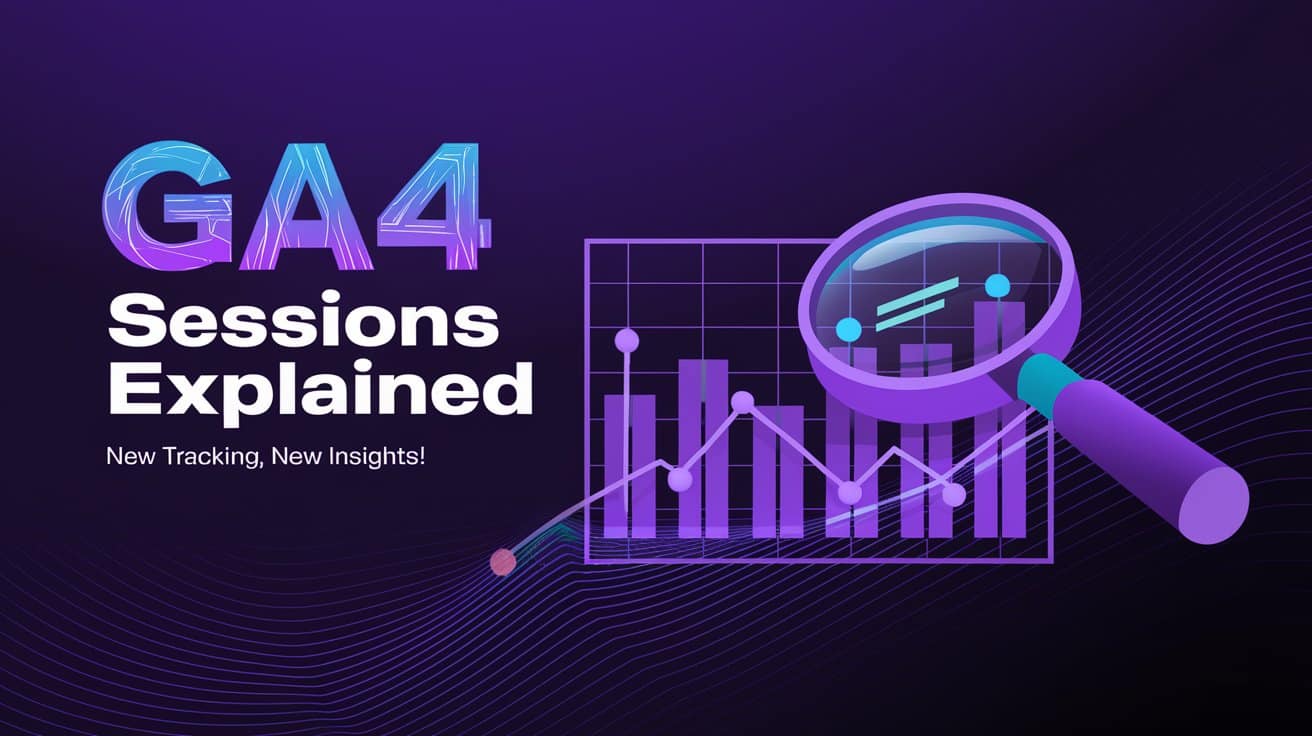Google Analytics 4 (GA4) tracks sessions differently from Universal Analytics (UA), impacting how you interpret your website data. If you’ve been using UA, you’ll notice some key differences in how sessions are defined, how traffic sources affect them, and what this means for attribution.
Let’s break it down.
What Are Sessions in GA4?
In GA4, sessions are categorized based on the traffic source details recorded when a user first lands on your site or app. Unlike UA, GA4 does not reset a session at midnight or when a new campaign source is detected. Instead, a session continues until the user becomes inactive for more than 30 minutes or leaves the site.
This approach gives a more consistent view of user activity, especially across multiple touchpoints.
Users vs. Sessions: What’s the Difference?
GA4 separates users and sessions, offering a clearer picture of website engagement.
- User: A unique visitor who interacts with your site. GA4 focuses on active users.
- Session: A set of interactions (page views, events, etc.) within a specific time frame.
One user can have multiple sessions. For example, if someone visits your website twice in one day, GA4 logs them as one user but two separate sessions.
Engaged Sessions vs. Engaged Sessions Per User
A common question from those transitioning from UA is the difference between these two metrics.
-
Engaged Session: A session is considered ‘engaged’ if it meets at least one of these conditions:
- Lasts at least 10 seconds.
- Includes at least one conversion event.
- Has two or more pageviews or screenviews.
- Engaged Sessions Per User: This is calculated by dividing the total number of engaged sessions by the number of users. It helps measure how frequently users engage meaningfully with your site.
GA4’s engagement metrics, like session engagement rate and average engagement time, provide better insight into session quality rather than just volume.
Understanding Data Scopes in GA4
Every dimension and metric in GA4 has a scope that defines how data is collected and interpreted.
- User Scope: Dimensions like ‘First User Default Channel Group’ and ‘First User Source/Medium’ aggregate data across all sessions of a user. Use these when analyzing long-term behavior.
- Session Scope: Metrics like ‘Sessions’ focus on specific interactions within an individual session.
- Event Scope: Tracks interactions within a session, such as button clicks, video plays, or conversions.
Mixing dimensions with different scopes can lead to misleading insights. For example, pair ‘First User Source/Medium’ with other user-scoped dimensions to maintain consistency.
Key Session Scope Dimensions in GA4
GA4 provides session-based dimensions to track user behavior and refine marketing strategies:
- Session Default Channel Grouping: Categorizes traffic by acquisition channel (Organic Search, Paid Search, Social, etc.).
- Session Medium: Specifies the channel type (organic, CPC, referral, etc.).
- Session Source: Identifies the specific website or platform that referred the user.
- Session Campaign: Tracks the marketing campaign that brought the user to your site.
These dimensions help businesses analyze where traffic is coming from and which channels drive the most valuable users.
GA4’s session tracking model is streamlined yet powerful, offering deeper insights into user behavior compared to Universal Analytics. While the differences may take some getting used to, embracing GA4’s event-based tracking and engagement metrics will help you make smarter data-driven decisions.
By leveraging session data effectively, you’ll get a clearer understanding of traffic sources, user engagement, and attribution—allowing you to optimize marketing efforts with confidence.

